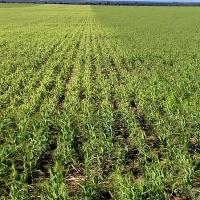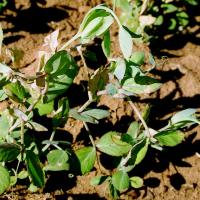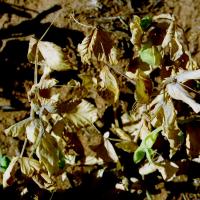| Group L Bipyridyls | Group G Aryl triazalinone | ||
| Chemical name | Example trade name | Chemical name | Example trade name |
| Diquat | Reglone | Carfentrazone | Affinity, Hammer |
| Paraquat | Gramoxone | Group G Pyrimadindione | |
| Diquat+paraquat | Spray Seed | Butafenacil | Knockdown component of Logran B-Power |
| Group C Nitrile | Group G Diphenyl ethers | ||
| Bromoxynil | Buctril 200 | Oxyfluorfen | Goal |
Symptoms appear within hours (Group L), or one or two days (Group G) of application.





